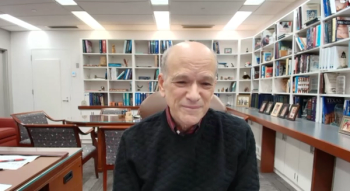During times of stress and anxiety, it is natural to look for something to “take the edge off.” Fortunately, there is an option that is low cost with relatively no adverse effects that can be used as often you deem it necessary, explains Philip R. Muskin, MD, MA, DLFAPA, LFACLP, Professor of Psychiatry and Senior Consultant in C-L Psychiatry at Columbia University Irving Medical Center in New York City.
In this video, Dr Muskin shares his approach to “chill out” using hypnosis and imagery. Find a comfortable chair, and get ready to take this journey to relaxation.
A brief history of hypnosis
Franz Anton Mesmer, MD, is considered one of the first people to use the ideas associated with hypnosis. In late 1700s, he developed a system of therapeutics known as mesmerism, which he practiced first in Germany and later in Paris. Mesmerism was based on the idea that there were fluids in the body that were influenced by “animal magnetism.” Disease, he believed, was caused by obstacles that blocked the fluids. The obstacles, in turn, could be broken via trance states, which would return the harmonious flow of fluids. Although his patients were loyal supporters, the medical profession was critical of his ideas and practices. After a commission appointed by King Louis XVI was unable to find support for his claims, the mesmerist movement declined.
In an ironic twist of fate, a skeptic attempting to discredit the ideals of mesmerism actually became the father of hypnosis after observing a traveling mesmerist. Scottish neurosurgeon James Braid conducted trials and experiments on himself and others; he eventually developed a technique of relaxation and eye-fixation that resulted in a trance-like state that could also be achieved by suggestions alone. Braid published “Neurypnology or The Rationale of Nervous Sleep Considered In Relation With Animal Magnetism” in 1842. He coined the terms hypnosis and hypnotism in deference to the Greek god of sleep, Hypnos, since he believed the trance-like state was related to sleep. His ideas continued to spread and gain popularity through the late 1800s.
Acceptance for its use often came from odd places. The Roman Catholic Church decreed it was not morally forbidden in 1847. And, in 1956, Pope Pius XII indicated it was useful in treating pain, including during childbirth.
In 1955, the British Medical Association issued a report endorsing hypnosis, stating there can be “definite and proper uses of hypnosis in medical and dental practice.” The American Medical Association followed suit, and approved its use in 1958. Last to the party, the American Psychiatric Association issued a position statement in 1961 noting that “hypnosis has definite application in the various fields of medicine.”
Today, hypnosis is used for relaxation as well as to relieve pain and for psychotherapeutic purposes.


















